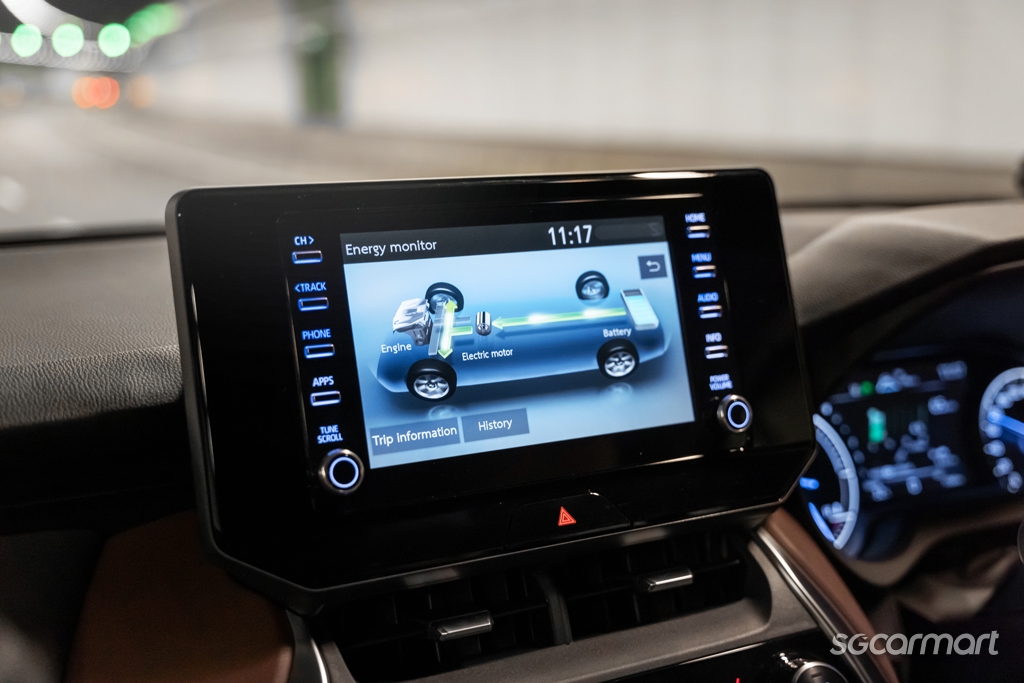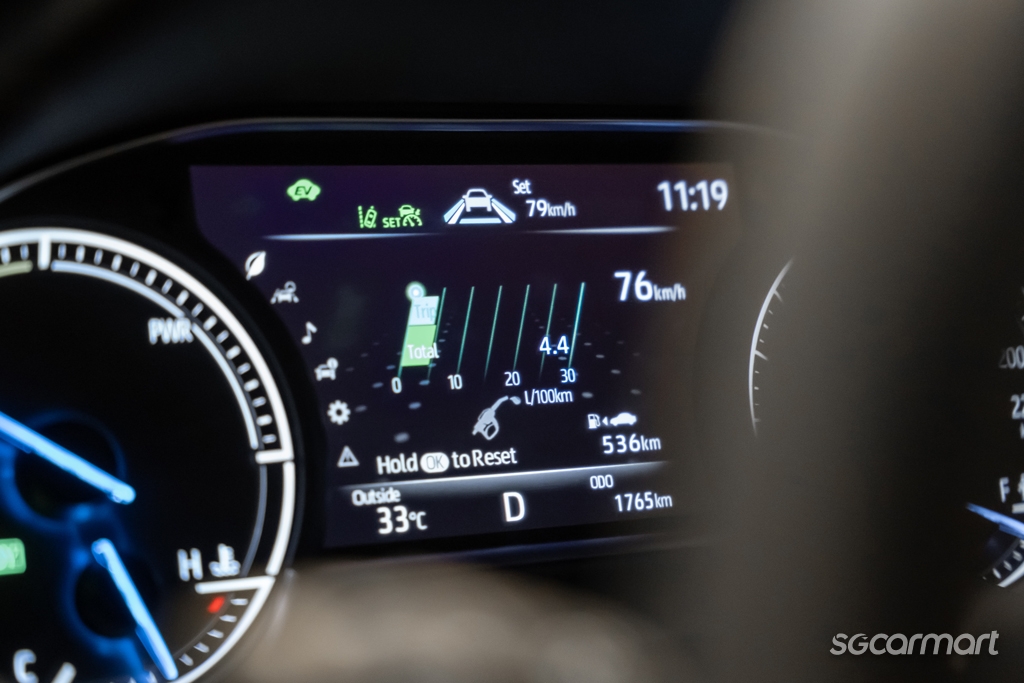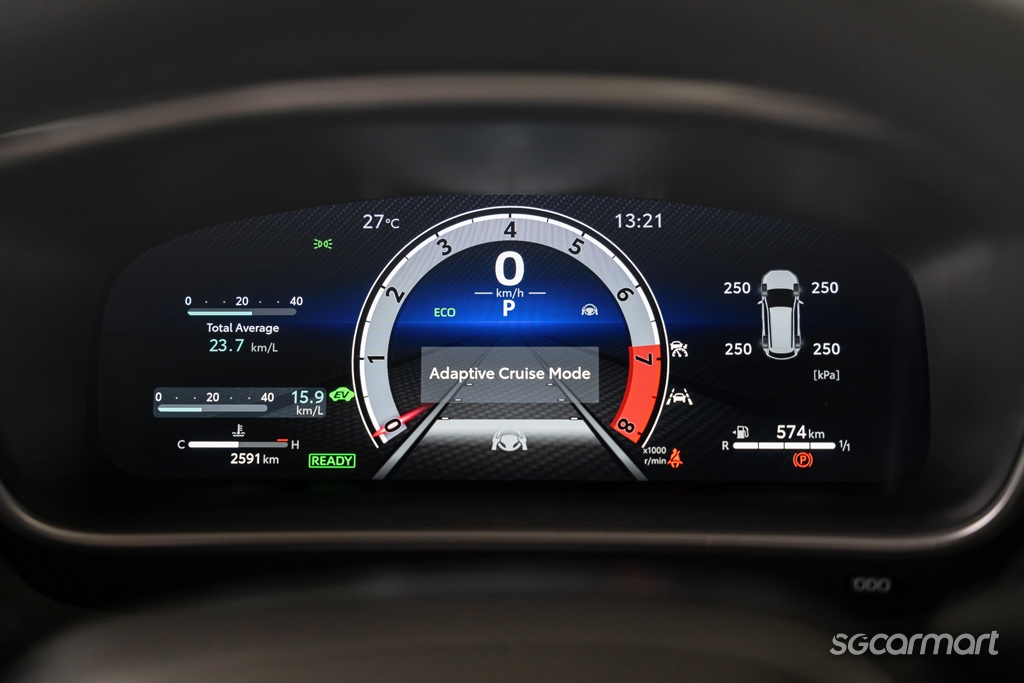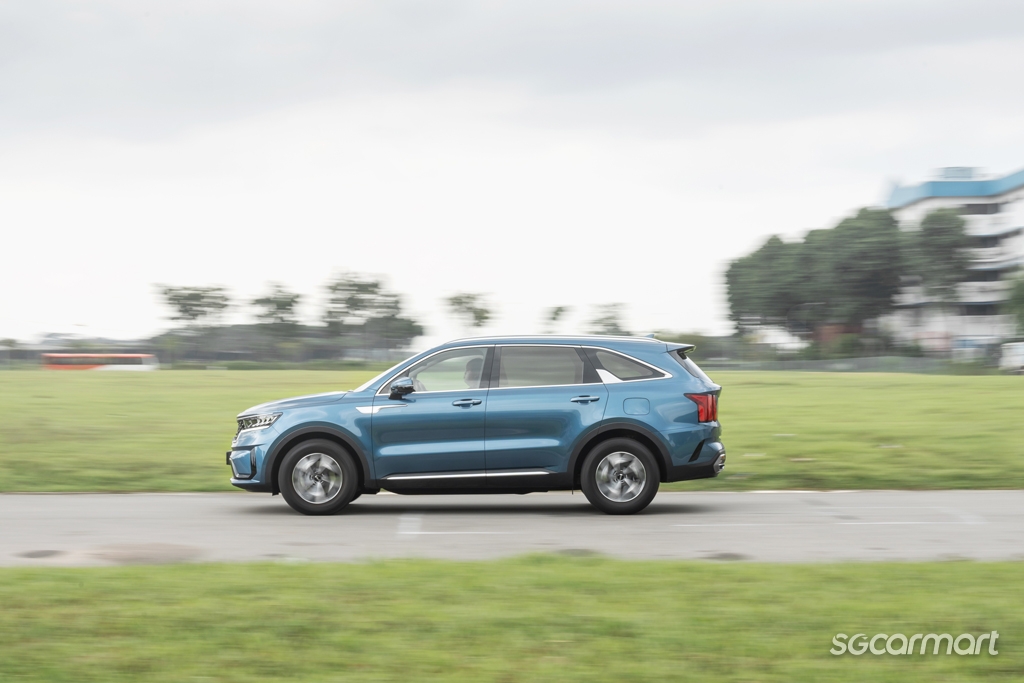First-time hybrid owner? Relax, your fuel gauge isn't broken
31 Oct 2023|18,807 views
Most drivers who have owned a regular internal combustion engine (ICE) vehicle are used to seeing their fuel gauge move some time after pumping petrol.
Of course, every car's consumption depends on its make and model, and the driving habits of the person behind the wheel. But by and large, most of us are used to seeing the fuel gauge or needle start moving after driving close to 100km on a full tank of petrol.
But if you've driven over 100km and the gauge still hasn't moved, you might start to think that it's malfunctioning. After all, the car has surely consumed a good amount of petrol after being driven a considerable distance, right?
Not if your car sips fuel
A Toyota Corolla Altis with a 1.6-litre engine supposedly averages 15.6km/L. But a Toyota Harrier Hybrid, which is larger, heavier and has a 2.5-litre engine, manages 21.2km/L.
How is this possible? Well, unlike regular cars, a petrol-electric hybrid has an electric motor that works in tandem with the engine. This electric motor is fed by a battery pack, which is recharged by either the engine, regenerative braking, or both.
Under the right conditions, a hybrid can be solely electrically driven as long as there's enough juice in the battery. This typically happens when you're crawling in traffic or manoeuvring in a carpark, although models such as the Kia Sorento Hybrid can also cruise at expressway speeds on electric power alone.
With an electric powertrain that can take over from the internal combustion engine, fuel consumption is greatly minimised.
Check the figures
Say you've driven 150km since you filled your tank, and the fuel gauge has barely moved. If you've been driving normally and not like a madman, relax. There's nothing wrong with your instruments.
But should you wish to check, you can cycle through your trip computer. Modern cars can display the average fuel economy and estimate the maximum driving range. If the economy figure is close to 20km/L or more, well, that's exactly why the needle hasn't moved.
But is the fuel gauge really working?
If this is your first hybrid car, your scepticism is understandable. After all, since the car still burns petrol for propulsion, shouldn't the fuel gauge be more 'responsive'?
A faulty fuel gauge technically isn't impossible, but it's unlikely for this to happen to a new car. Most automobiles today are relatively reliable, so you may want to consider that first before sending your car back to the dealer or to a workshop.
Give yourself some time to get used to your more efficient ride. By then, the needle on the fuel gauge would have started to drop. Make a mental note of when it happens, so that next time, you'll know when to expect it.
Looking for more advice? These stories may interest you
Relax, it's just the Stop-Start System
Eight fuel economy hacks that will benefit new and seasoned drivers
Six car features you (probably) didn't learn about in driving school
Most drivers who have owned a regular internal combustion engine (ICE) vehicle are used to seeing their fuel gauge move some time after pumping petrol.
Of course, every car's consumption depends on its make and model, and the driving habits of the person behind the wheel. But by and large, most of us are used to seeing the fuel gauge or needle start moving after driving close to 100km on a full tank of petrol.
But if you've driven over 100km and the gauge still hasn't moved, you might start to think that it's malfunctioning. After all, the car has surely consumed a good amount of petrol after being driven a considerable distance, right?
Not if your car sips fuel
A Toyota Corolla Altis with a 1.6-litre engine supposedly averages 15.6km/L. But a Toyota Harrier Hybrid, which is larger, heavier and has a 2.5-litre engine, manages 21.2km/L.
How is this possible? Well, unlike regular cars, a petrol-electric hybrid has an electric motor that works in tandem with the engine. This electric motor is fed by a battery pack, which is recharged by either the engine, regenerative braking, or both.
Under the right conditions, a hybrid can be solely electrically driven as long as there's enough juice in the battery. This typically happens when you're crawling in traffic or manoeuvring in a carpark, although models such as the Kia Sorento Hybrid can also cruise at expressway speeds on electric power alone.
With an electric powertrain that can take over from the internal combustion engine, fuel consumption is greatly minimised.
Check the figures
Say you've driven 150km since you filled your tank, and the fuel gauge has barely moved. If you've been driving normally and not like a madman, relax. There's nothing wrong with your instruments.
But should you wish to check, you can cycle through your trip computer. Modern cars can display the average fuel economy and estimate the maximum driving range. If the economy figure is close to 20km/L or more, well, that's exactly why the needle hasn't moved.
But is the fuel gauge really working?
If this is your first hybrid car, your scepticism is understandable. After all, since the car still burns petrol for propulsion, shouldn't the fuel gauge be more 'responsive'?
A faulty fuel gauge technically isn't impossible, but it's unlikely for this to happen to a new car. Most automobiles today are relatively reliable, so you may want to consider that first before sending your car back to the dealer or to a workshop.
Give yourself some time to get used to your more efficient ride. By then, the needle on the fuel gauge would have started to drop. Make a mental note of when it happens, so that next time, you'll know when to expect it.
Looking for more advice? These stories may interest you
Relax, it's just the Stop-Start System
Eight fuel economy hacks that will benefit new and seasoned drivers
Six car features you (probably) didn't learn about in driving school

























